Strategic portfolio management is a crucial process that can help teams make the most of their organization’s resources. This approach enables teams to identify and prioritize work that aligns with their overall goals and objectives. However, simply implementing a portfolio management strategy and solution is not enough to guarantee success. In this post, we’ll provide five suggestions for increasing the likelihood of your organization’s success with strategic portfolio management. In addition, we’ll outline how an enterprise solution like Clarity can help with your strategic portfolio management journey.
1. Establish Clear and Consistent Communication
You may remember the game of “telephone” in which one person whispers a message to the person on their right, and the process continues until you work around the table. Invariably, the message the last person receives is fundamentally different than the one issued at the start of the process.
When it comes to something as crucial as strategic portfolio management, you don’t want to be playing a game of telephone. It is critical to ensure everyone receives the same message and is on the same page. Make sure each team member understands the goals and objectives, the prioritization criteria, and the decision-making process. And remember, communication is a two-way street, so don't be afraid to listen to the input of others.
2. Involve Key Stakeholders
If you want to avoid the dreaded response, "this is not what we wanted," then it's essential to involve key stakeholders in the decision-making process. They'll bring their expertise, perspectives, and hopefully some snacks to the table, which can help ensure the portfolio aligns with the organization's overall strategy. Plus, involving stakeholders also helps to build buy-in and ownership, which increases the likelihood of success.
3. Build a Strong Governance Framework
Governance might sound like an intimidating concept, but it's really just a way of making sure everyone is playing by the same rules. Establish clear roles, responsibilities, and decision-making processes for each stage of the portfolio management process. Think of it as setting the ground rules for a game of Monopoly, but instead of hotels and houses, you're dealing with work and objectives.
4. Focus on Value Creation
This is where the rubber meets the road. Prioritize work that generates the most value and aligns with the organization's overall strategy. Don't waste your time on work that will give you a measly $5 in return when you can go for the jackpot with an effort that yields a $500 return. Use a structured process to evaluate and compare work based on potential benefits, risks, and costs.
5. Continuously Evaluate and Improve
This is the part where you get to ask "where are we going?" and make course corrections. Regularly review the portfolio's performance against the organization's goals and objectives, adjust the portfolio's composition as needed, and identify opportunities for improvement in the portfolio management process. It's like decluttering your closet, but instead of getting rid of clothes, you're getting rid of work that no longer sparks joy or brings value to your internal and external stakeholders.
How Clarity Can Help You Succeed With These Principles
Clarity provides a flexible interface to capture the aspirations and objectives of the organization. These values are visible and aligned across every investment within the solution.
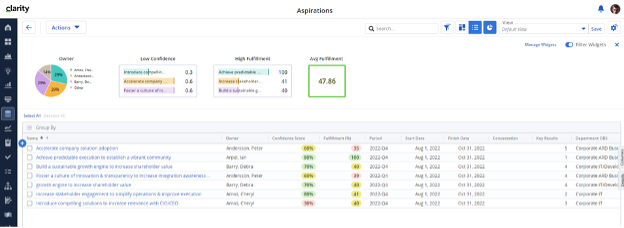
Clarity’s Roadmap interface overlays stakeholders’ “wants” with your organization’s currencies of constraint (that is, money or resources). The timeline, board, and grid views give each user visibility into the investments they are managing. Scenarios help inform key decisions and work sequencing, so teams can create the most value for the organization.
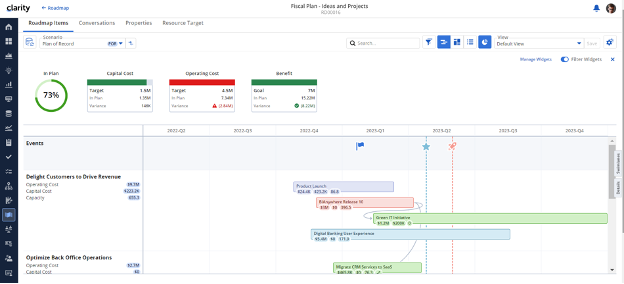
Bear in mind, you may be successful in aligning work with your strategy. Given that, it’s just as important to make sure you’re getting the required value out of what you prioritized. You can account for monetary and non-monetary benefits, both during the decision-making process and after selection. Visibility is provided at every level of the investment life cycle and is available via our data warehouse, which can feed intelligence into internal and external reporting interfaces.
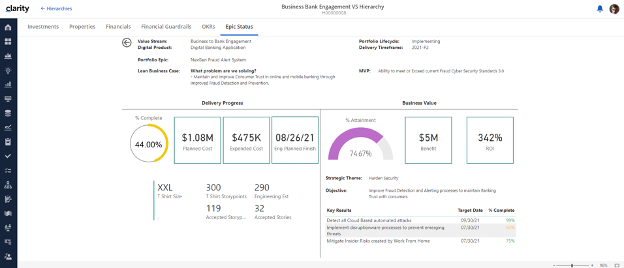
Once the goals are utilized to prioritize the work against value delivered, governance can be applied to the delivery lifecycle through the use of templates. These templates provide one form of truth across all managed investments. Templates house all relevant details about the investment, including both structured (milestones and forecasts), and unstructured (documents and links) data. In addition, they contain workflow processes to guide validation activities, escalations, and approvals.
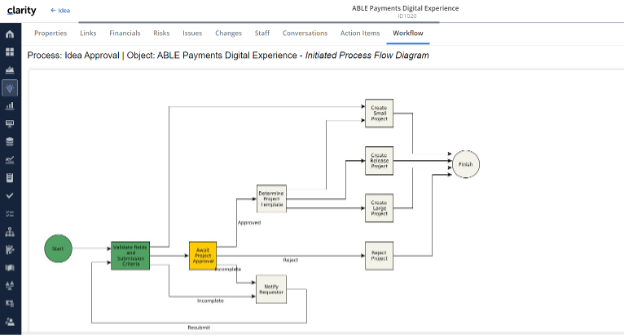
Even after you’ve established standards for strategy definition, investment decisions, and governance, there is always a need to collaborate and circle back with stakeholders to shift and pivot where necessary. Issues can stem from both internal and external sources but nonetheless need to be resolved. Clarity’s Agreements enable stakeholders to collaborate and provide a get-well plan to steer the ship back on course. As work is completed, this solution helps teams learn lessons and make continuous improvements. In addition, this can help guide reprioritization of the roadmap.
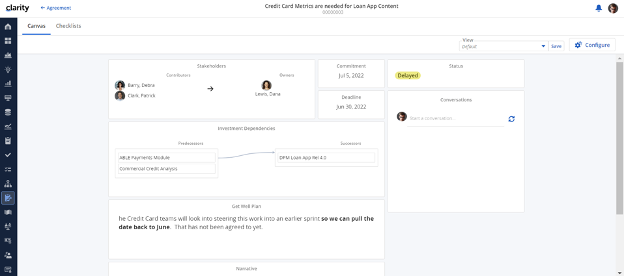
So there you have it, folks. I hope these tips prove useful. Ultimately, just remember to communicate clearly, involve stakeholders, establish good governance, focus on value creation, and continuously evaluate and improve. By employing these principles, you can maximize the likelihood of success in your strategic portfolio management journey.

Jason Kotlinski
Jason Kotlinski serves as Product Manager for Clarity with clients all across the globe. He is responsible for customer-facing aspects of product management, leading development of key marketable features, and assisting senior management with backlog prioritization and new feature definition.
Other resources you might be interested in
Automic Automation Cloud Integration: SAP S/4 HANA Application Jobs Integration
Simplify your SAP S/4HANA job management. Integrate with Automic Automation for central configuration, monitoring, and orchestration of all your enterprise jobs.
Automic Automation Cloud Integration: OpenSSH Integration
Master Open SSH automation. Use Automic Automation for centralized control, secure file transfer, command execution, and full job monitoring.
3 Questions I Expect You to Ask Me
Ask these questions to gain a deeper understanding of a vendor. Find a partner who can solve today’s challenges and prepare you for what’s next.
Carrier-Grade Network Observability: A Technology Brief for Telco Network Operations
Network Observability by Broadcom unifies data to provide contextual, AI-enabled insights for superior service availability, accelerated MTTR and improved MTTI, reduced operational costs, and the...
Rally Office Hours: December 4, 2025
Get the latest Rally updates, including a new Release Tracking page, and hear Q&A on revision history reporting, custom boards, and capacity planning.
You've Found the Waste In Your Network Operations. Now What?
Leverage the Six Sigma framework to gain a roadmap for converting network data into permanent optimizations. Start systematically eliminating network issues.
AAI Integrations: Control-M
This course explains how to install, configure, and secure the integration between Automation Analytics & Intelligence (AAI) and Control-M.
The Silent Sabotage of Configuration Drift
See how manual network changes lead to configuration drift, which can cause security holes, compliance violations, and network outages.
AAI - Configuring & Responding to Jobstream Alerts
This course walks you through how jobstream alerts work in AAI, and how to tailor them to your workload needs.